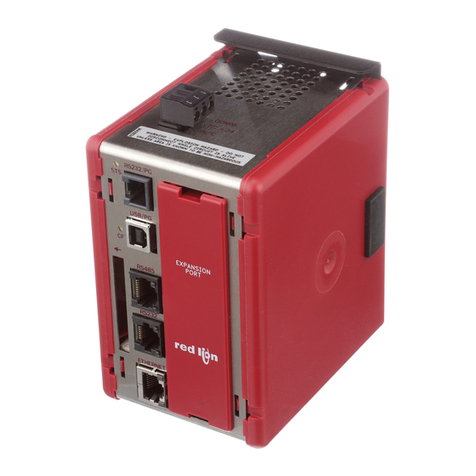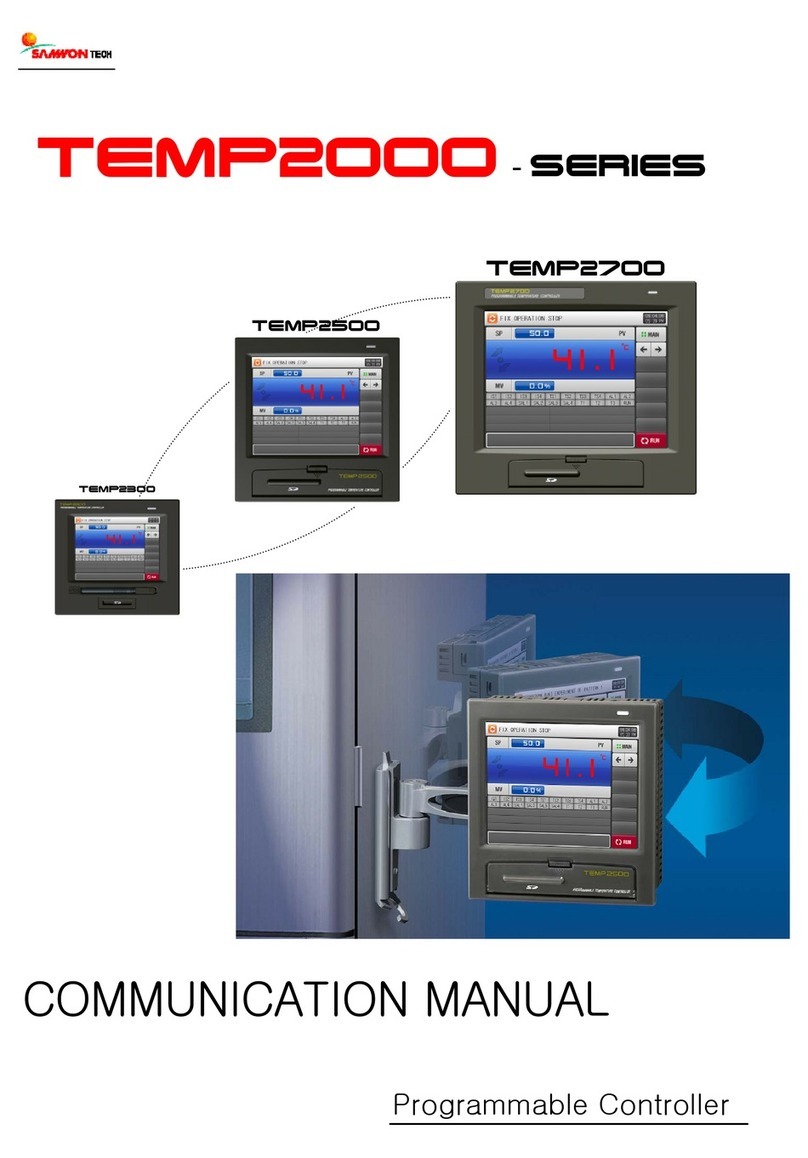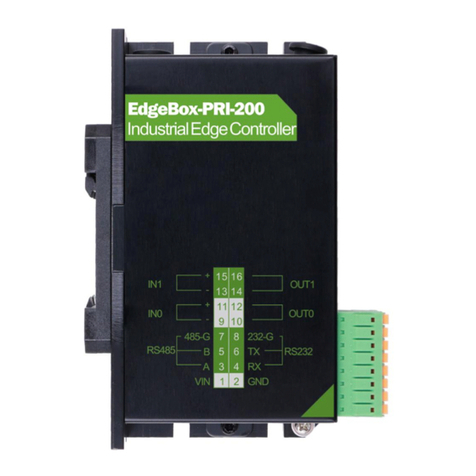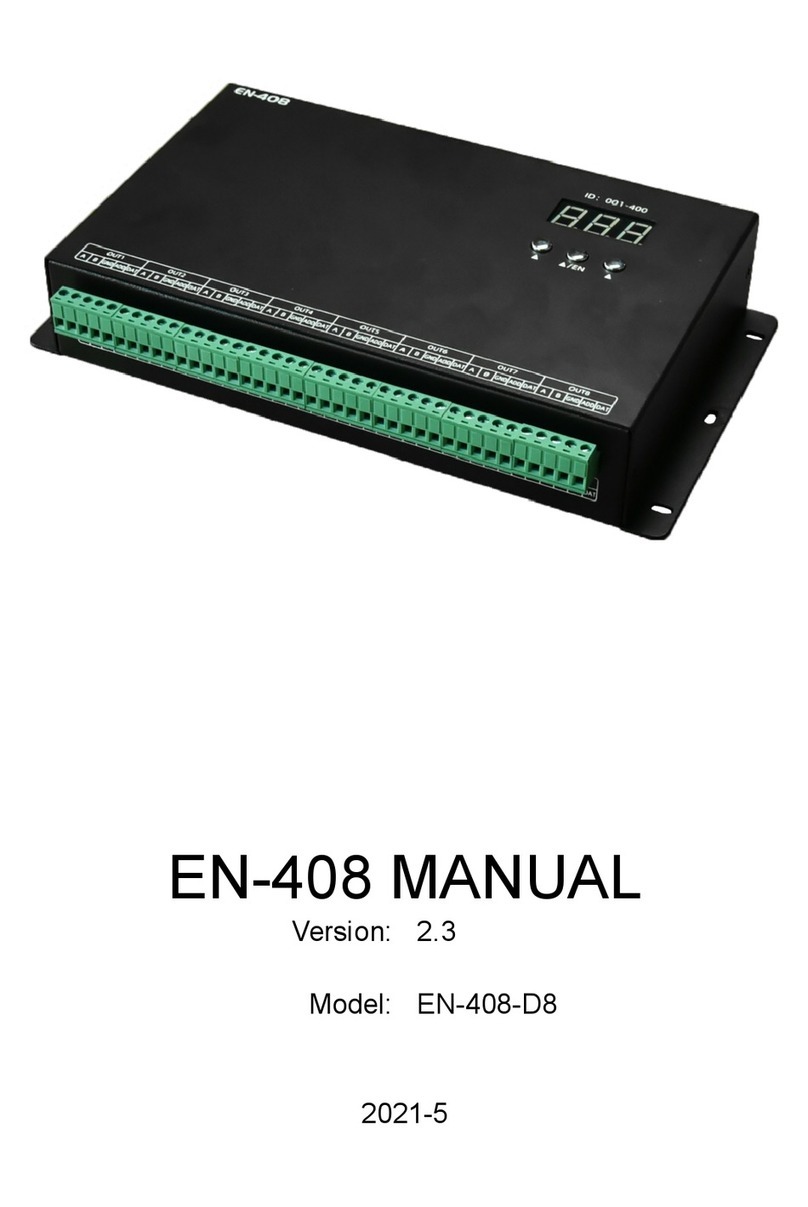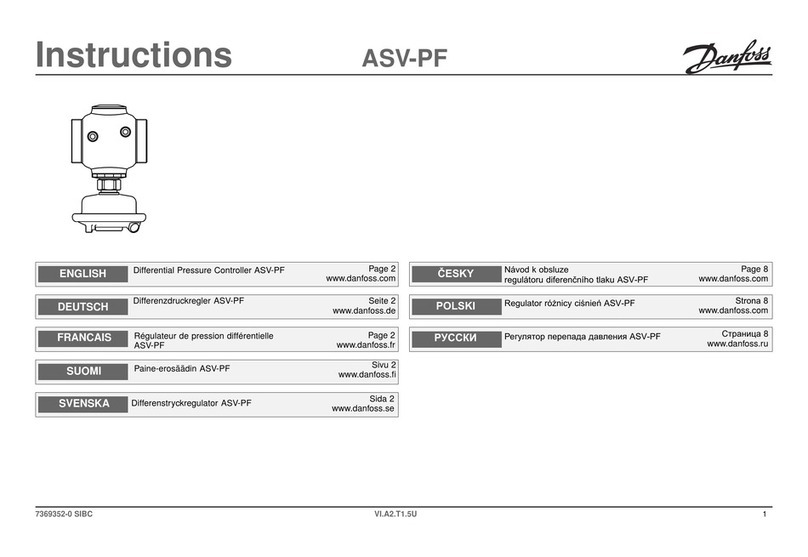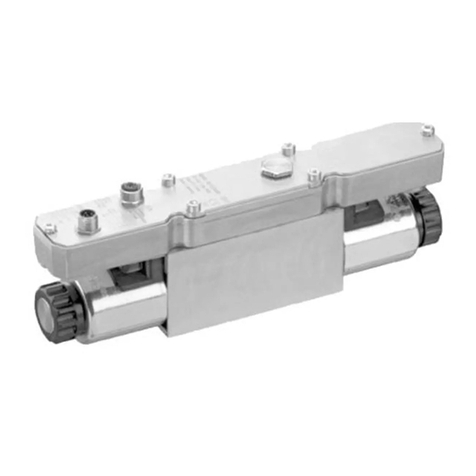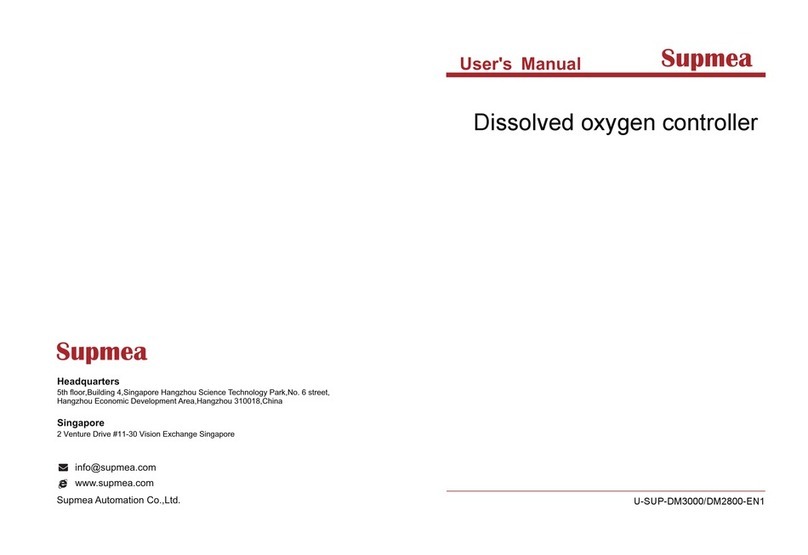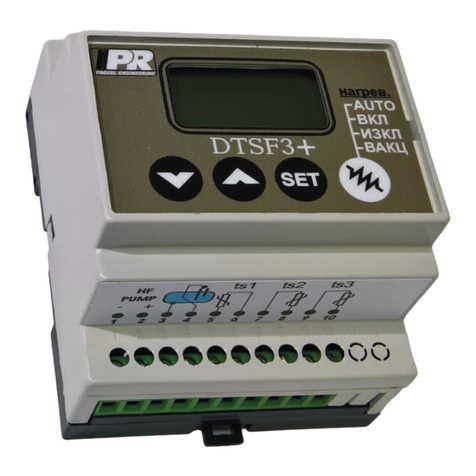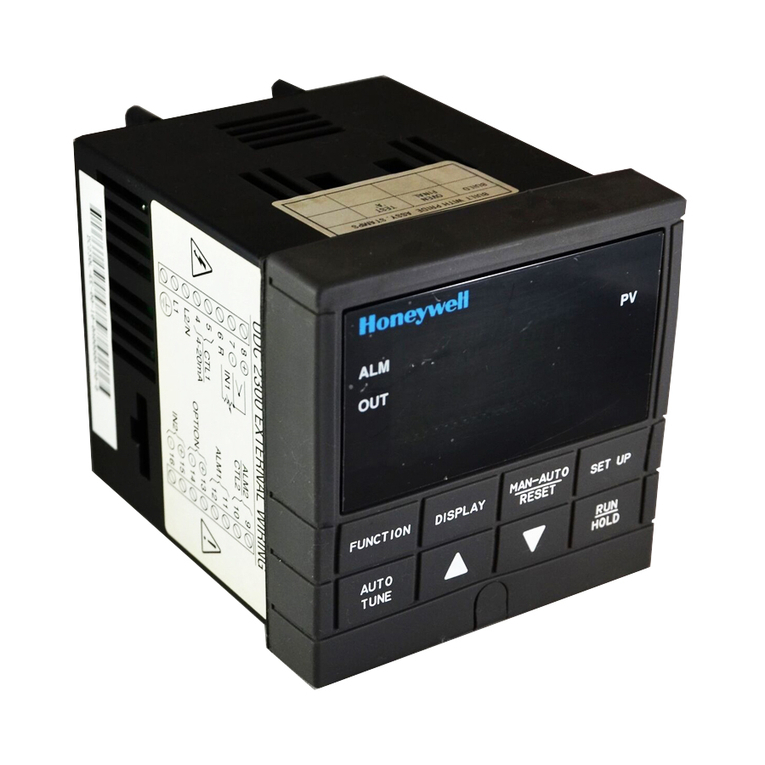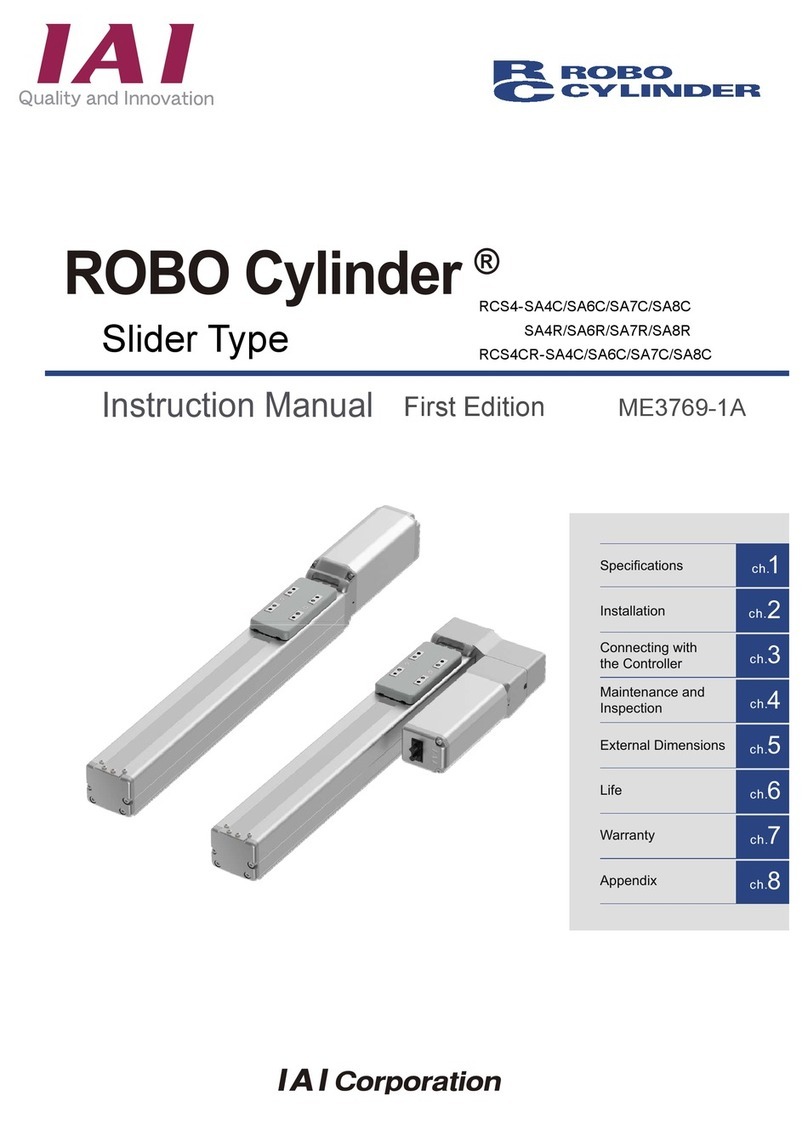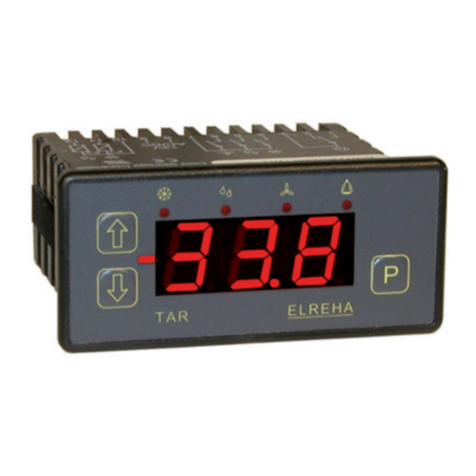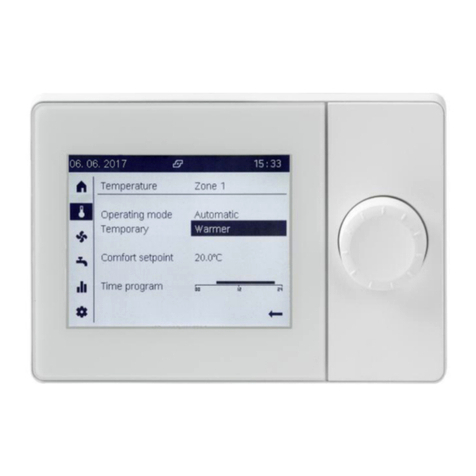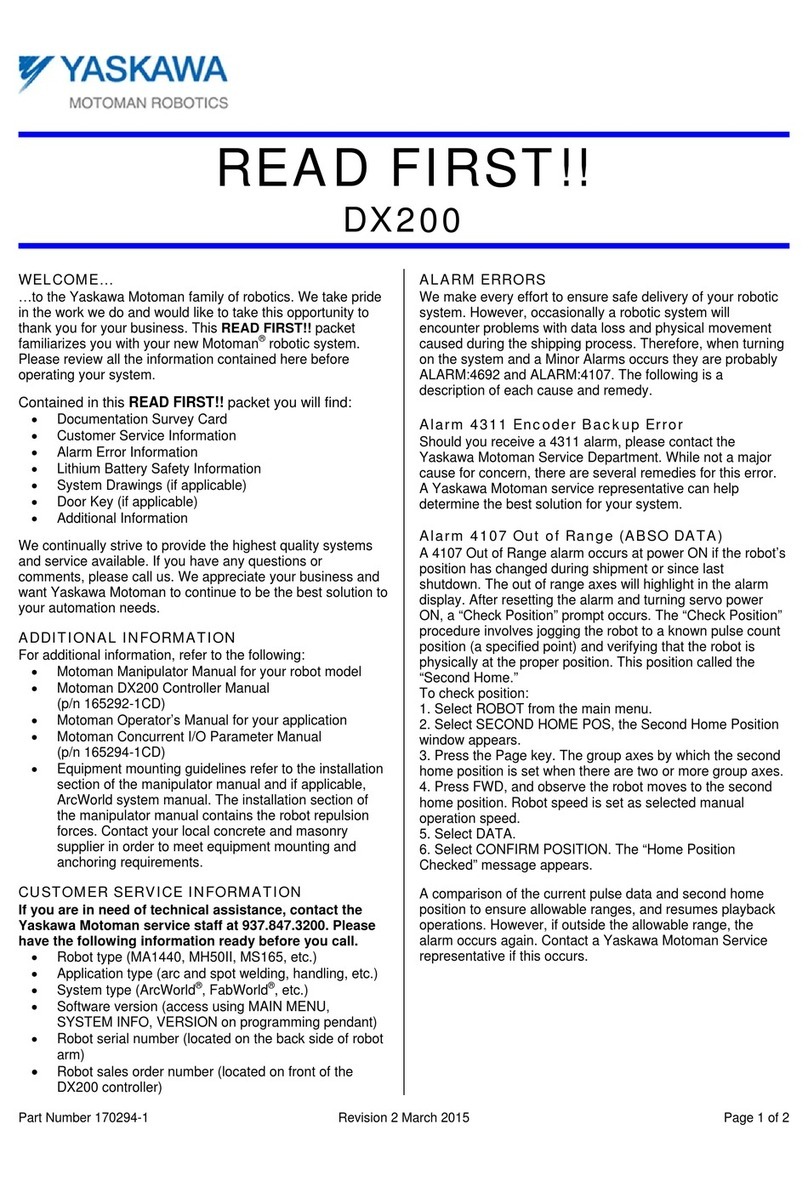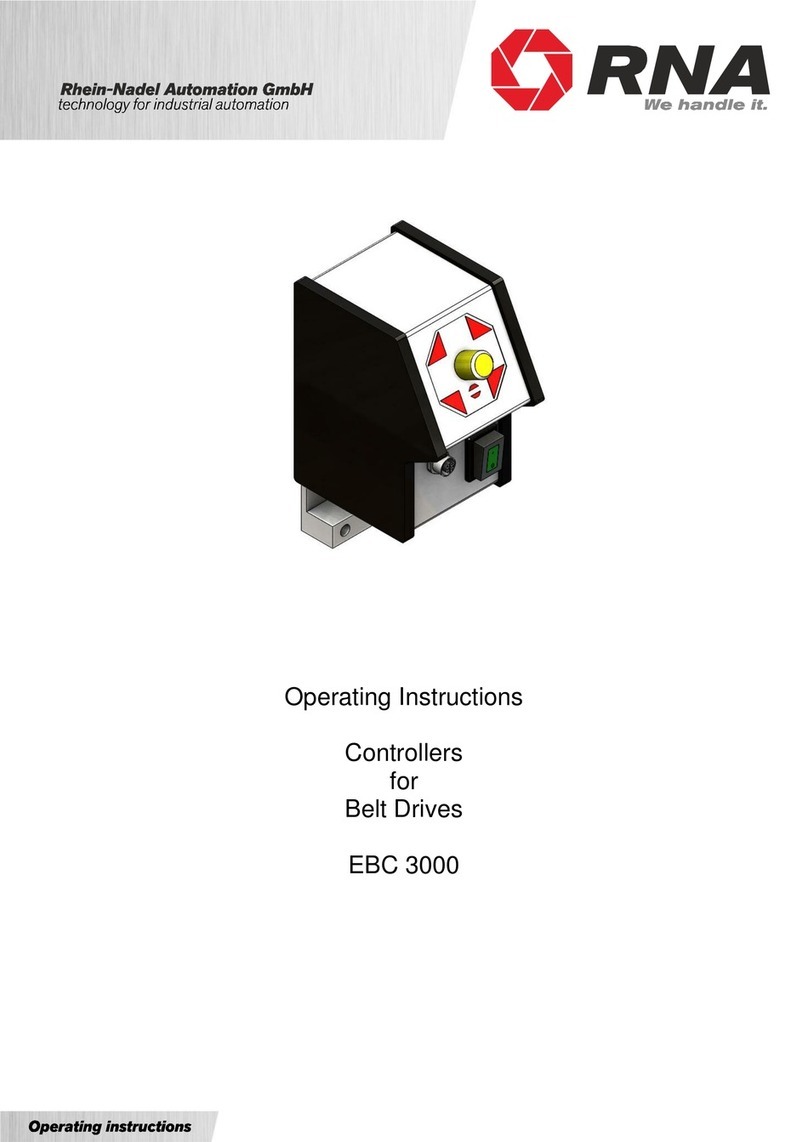Advanced lluminated Pulsar 710 User manual

P u l s a r 7 1 0 M a n u a l
Pulsar 710 Controller
Operator’s Manual
& Installation Guide

a d v a n c e d i l l u m i n a t i o n . c o m
P u l s a r 7 1 0 M a n u a l
Packing list, Pulsar 710
The shipping container should contain the following items:
Pulsar 710 controller (1)
Installation CD (1)
Pulsar 710 operator’s manual (1)
3 Pin,Trigger input connectors (2)
2 Pin, Power input connector and cable (1)
USB cable (1)
Advanced illumination
24 Peavine Drive
Rochester VT 05767
802.767.3830
1595.050017 REV- Manual, Operation, Pulsar 710
2

a d v a n c e d i l l u m i n a t i o n . c o m
P u l s a r 7 1 0 M a n u a l
Pulsar 710 Controller
Operator’s Manual
Table of Contents
Section: 1.0 Introduction . . . . . . . . . . . . . . . . . . . . . . . . . . . . . . . . . . 6
1.1 Safety
1.2 Warranty
1.3 Return Policy
Section: 2.0 Features . . . . . . . . . . . . . . . . . . . . . . . . . . . . . . . . . . . . . . . 7
2.1 Four Channels
2.2 User Interface
2.2.1 Remote Operation
2.2.2 Local Control
2.3 Diagnostics
Section: 3.0 Quick Start . . . . . . . . . . . . . . . . . . . . . . . . . . . . . . . . . . . . 8
3.1 Pulsar 710 Controller Cable Connections
3.1.1 Power
3.1.2 Light Head
3.2 Pulsar 710 Status Indicator Lights
3.2.1 Green
3.2.2 Amber
3.2.3 Red
3.3 Local Control
Section: 4.0 Operation . . . . . . . . . . . . . . . . . . . . . . . . . . . . . . . . . . . . . . . . . . 11
4.1DenitionofTerms
4.1.1 Constant Mode
4.1.2 Duty Cycle
4.1.3 Gated DC Mode
4.1.4 Latency
4.1.5 LED and light head characteristics
4.1.5.1 LED forward voltage
4.1.5.2 LED thermal resistance
4.1.5.3 LED voltage slope
4.1.5.4 Light head characteristics
4.1.6 Period
4.1.7 Pulse Width
4.1.8 Repetition Rate
4.1.9 Signatech II
4.1.10 Strobe and Constant (DC) modes
4.1.11 Timing Bypass
4.1.12 Trigger
3

a d v a n c e d i l l u m i n a t i o n . c o m
P u l s a r 7 1 0 M a n u a l
4.1.13 Trigger Pass Through
4.1.14 Trigger Delay
4.2 Pulsar 710 Controller Cable Connections
4.2.1 Power
4.2.2 Trigger
4.2.3 RS 232/485
4.2.4 USB
4.2.5 Light Head
4.3 Pulsar 710 Status Indicator Lights
4.3.1 Green
4.3.2 Amber
4.3.3 Red
4.4 Host Computer Control (Remote)
4.4.1 Software Installation
4.4.2 Running Under Host Computer Control
4.4.2.1CongurePulsar710
4.4.2.2 Launch Pulsar 710 Controller Utility
4.4.2.3 Pulsar 710 Utility Dialog Box Status Indicators
4.4.2.4 Pulsar 710 Utility Dialog Box Output Controls
4.5 Local Control
4.5.1 Controls
4.5.1.1 Mode Control
4.5.1.2 Variable Controls
4.6 External Trigger Interface
4.6.1AlternateTriggerCongurations
4.7 Timing Bypass
Section: 5.0 Custom Programming . . . . . . . . . . . . . . . . . . . . . . . . 28
Section: 6.0 Troubleshooting . . . . . . . . . . . . . . . . . . . . . . . . . . . . . . . 28
6.1 Pulsar 710 Status Indicator Lights
6.2 Error Codes
Section: 7.0 Specications . . . . . . . . . . . . . . . . . . . . . . . . . . . . . . . . . 30
Section: 8.0 Appendix . . . . . . . . . . . . . . . . . . . . . . . . . . . . . . . . . . . . . 33
A: NPN / PNP - PLC trigger connection
B: Activate differential trigger
C: Activate Trigger pass through
D: Installation Drawing
4

a d v a n c e d i l l u m i n a t i o n . c o m
P u l s a r 7 1 0 M a n u a l
List of Figures:
Figure 1: Pulsar 710 front panel . . . . . . . . . . . . . . . . . . . . . . . . . . . . . . . . . . . . . . . . . . . . . . 9
Figure 2: Pulsar 710 rear panel . . . . . . . . . . . . . . . . . . . . . . . . . . . . . . . . . . . . . . . . . . . . . . . 9
Figure 3: Attaching a light to the Pulsar 710 . . . . . . . . . . . . . . . . . . . . . . . . . . . . . . . . . . 9
Figure 4: Status indicator lights . . . . . . . . . . . . . . . . . . . . . . . . . . . . . . . . . . . . . . . . . . . . . . 10
Figure 5: Output connector connection diagram example . . . . . . . . . . . . . . . . . . .15
Figure 6: USB type B connector. Pulsar end (cable and jack) . . . . . . . . . . . . . . . . .17
Figure 7: Software installation, destination folder . . . . . . . . . . . . . . . . . . . . . . . . . . . . .18
Figure 8: Software installation, program group . . . . . . . . . . . . . . . . . . . . . . . . . . . . . . . 18
Figure 9: Pulsar 710 controller utility dialog box . . . . . . . . . . . . . . . . . . . . . . . . . . . . . 19
Figure 10: Front panel controls . . . . . . . . . . . . . . . . . . . . . . . . . . . . . . . . . . . . . . . . . . . . . . 22
Figure 11: Trigger connection diagram . . . . . . . . . . . . . . . . . . . . . . . . . . . . . . . . . . . . . . . 26
Figure 12: Pulsar 710 trigger wiring schematic . . . . . . . . . . . . . . . . . . . . . . . . . . . . . . . 34
Figure 13 & 14: Pulsar 710 PCB . . . . . . . . . . . . . . . . . . . . . . . . . . . . . . . . . . . . . . . . 35 & 37
List of Tables:
Table 1: Pulsar 710 output connector, pin description . . . . . . . . . . . . . . . . . . . . . . . 16
Table 2: Local control operating modes . . . . . . . . . . . . . . . . . . . . . . . . . . . . . . . . . . 23-24
Table 3: Pulsar 710 trigger connector, pin description . . . . . . . . . . . . . . . . . . . . . . . 25
5

a d v a n c e d i l l u m i n a t i o n . c o m
P u l s a r 7 1 0 M a n u a l
Section: 1.0 Introduction
The Pulsar 710 Controller, used in conjunction with an external 24VDC
power supply, is a compact, 4 channel, high power current source
incorporating a wide range of exibility for selecting the operating
parameters.Theunitcanbeconguredtooperateasastrobeunitora
constant current (DC) source.The unit may be controlled and operated
locally (with some restrictions) or remotely via a USB interface and host
computer.
The balance of this manual contains the necessary operating instructions,
specicationsandotherdetailsrequiredtoallowtheusertoutilizethe
full capabilities of the Pulsar 710.
1.1 Safety
The Pulsar 710 is designed to protect Advanced illumination (Ai) light
headshavingtheSignatechIorSignatechIIlightheadidentication
parameters.WhenusinglightheadsconguredforSignatechI,anadapter
cable must be used to connect these lights to the Pulsar 710.
In certain modes of operation, the output voltages and currents
provided by the Pulsar 710 could result in a potentially injurious
or fatal electrical shock. For this reason, light heads should be
connected BEFORE the power switch is turned on. At no time
should the operator touch the output connector pins when the
power is on.
Advanced illumination makes no warranty, expressed or implied, if
illumination or other devices produced by manufacturers other than Ai
are connected to the Pulsar 710.
1.2 Warranty
Every Advanced illumination, Inc. (Ai) product is thoroughly inspected and
tested before leaving the factory. Products are warranted to be free of
defects in workmanship and materials for a period of TWO YEARS from
the original date of purchase. Should a defect develop during this period,
return the complete product, freight prepaid, to one of Ai’s distributors or
to the Ai factory. Ai will inspect the unit, and if a defect is found will, at our
option, repair or replace the product without charge. Ai disclaims liability
6
dd

a d v a n c e d i l l u m i n a t i o n . c o m
P u l s a r 7 1 0 M a n u a l
for any implied warranties,including implied warranties or“merchantability”
and“tnessforaspecicpurpose.”
Aicannotbeheldresponsiblefortheunauthorizedorinappropriateuse
of our products.
NO LIABILITY FOR CONSEQUENTIAL DAMAGES.
InnoeventshallAdvancedillumination,Inc.beliableforconsequential,
special, incidental or indirect damages of any kind arising from the sale or
use of products.
1.3: Return Policy
Standard Products may be returned within 30 days of receipt of the order.
Products must be in resalable condition,in function and appearance, with
shipping charges prepaid. A restocking fee of 15% will be applied to all
items accepted for return to stock. If you need to make a return, please
call our Customer Service Department at 802.767.3830 x237 or x222
foraReturnMerchandiseAuthorization(RMA)number.Clearlymark
the outside of the package with the RMA number.
NO RETURNS CAN BE ACCEPTED FOR STANDARD VARIATION,
CUSTOM VARIATION AND CUSTOM PRODUCTS.
Therearecurrentlyover100,000uniquecongurationsoftheAiproduct
line.Therefore,wecannotrestockalightbuilttoyourspecications.We
would be glad to help you order your light if you are unsure of the correct
partnumberoryourexactrequirements.
Section: 2.0 Features
The following is a brief overview of the features provided by the Pulsar
710. These features will be covered in greater detail within the Operation
andSpecicationsectionsofthemanual.
2.1 Four Channels
Four output channels, capable of high output power are provided. Each
will provide up to 2A of constant current drive in the dc mode or up
to 25A of pulsed current drive in the strobe mode. The current of
each channel is independently selectable. Output pulse widths can be
7

a d v a n c e d i l l u m i n a t i o n . c o m
P u l s a r 7 1 0 M a n u a l
set between 1 and 999 microseconds in 1 microsecond increments at
pulserepetitionratesupto200Hz.
2.2 User Interface
2.2.1 Remote Operation: Remote operation via a host computer
allows the operator to make full use of the exibility offered by the
Pulsar 710. Communication is accomplished by a USB interface.
Operating parameters are set by user friendly Windows based Pulsar
710 controller software. Supported operating systems are Windows
2000 and Windows XP.
2.2.2 Local Control: Front panel controls permit the operator
to select the operating parameters under local control. Selected
parameters are stored in electrically erasable programmable read-only
memory (EEPROM).
2.3 Diagnostics
A comprehensive set of diagnostic routines and indicators are provided.
Error codes are displayed by the Pulsar 710 via LED indicators on the
frontpanel.Codedenitionsarefoundinsection6.0“Troubleshooting”
where diagnostics are covered in greater detail.
Section: 3.0 Quick Start
Thepurposeofthissectionistoallowtheoperatortoperformaquick
functional test. This will permit an easy checkout of the Pulsar 710 and
attached light head for proper operation.
3.1 Pulsar 710 Controller Cable Connections:
TwophysicalcableconnectionswillberequiredtooperatethePulsar
710 and light head in self test mode. Figure 1 shows the front panel of
the Pulsar 710.
3.1.1 Power:The Pulsar 710 requires an external 24 volt supply for
operation. A power cable is provided. Plug the 2 pin connector into the
socket labeled “VDC INPUT”. Observe the polarity markings on the
panel below the VDC INPUT socket. Refer to section 4.2.1 for more
details regarding the 24 volt supply.
8

a d v a n c e d i l l u m i n a t i o n . c o m
P u l s a r 7 1 0 M a n u a l
3.1.2 Light Head: Figure 2 shows the rear panel of the Pulsar 710 and,
in particular, the location of the 14 pin output connector.
Figure 3 shows how the output
connector on the rear panel of
the Pulsar 710 mates with the
light head connector. Plug the
connector from the light head into
the 14 pin socket in the rear of the
Pulsar 710 as shown in Figure 3.
3.2 Pulsar 710 Status Indicator Lights:
The Pulsar 710 has three LED indicator lights as shown in Figure 4:
3.2.1 Green: This light indicates that the Pulsar 710 has power either
from the USB connection to the host computer or the main 24VDC
power connection.
3.2.2 Amber: The amber light indicates the operational status of the
Pulsar710. A blink rate of once per second indicates normal operation.
A blink rate of 5 times per second indicates an error condition.
Figure 2: Pulsar 710 rear panel
Figure 1: Pulsar 710 front panel
9
100's 10's 1's MODE USB RS232/485
EXTERNAL TRIGGER VDC INPUT POWER ERROR STATUS
POWER
+-
1 2 3
456
VARIABLE CONTROL
ROTARY SWITCHES
MODE CONTROL
DIP SWITCHES
USB INTERFACE
TO HOST COMPUTER
RS232/485 INTERFACE
(FUTURE IMPLEMENTAION)
EXTERNAL TRIGGER
INTERFACE CONNECTOR
EXTERNAL DC POWER
INPUT CONNECTOR
LED STATUS
INDICATOR
MAIN POWER
SWITCH
0
1
234
5
6
7
8
987
0
4
3
2
1
5
9 6
7
8
1
234
5
0
9 6
01
Figure 3: Attaching a light to the Pulsar 710

a d v a n c e d i l l u m i n a t i o n . c o m
P u l s a r 7 1 0 M a n u a l
3.2.3 Red: The red light blinks an error
code in the case of an error condition.
The condition is indicated by three sets
of sequential ashes. For example: 4
ashesfollowedby2ashesfollowedby
3ashesindicatesanerrorcodeof423
whichsigniesthatthemainpowerswitch
is off. Two common error codes are:
• 351: No light head detected.
• 423:The main power switch is off.
(Refer to section 6.0 “Troubleshooting” for more detailed error code
information.)
3.3 Local Control
For the purposes of this procedure, the Pulsar 710 will be operated in self
testmodeutilizinglocalcontrol.
Using Figure 1, locate the four section dip switch that sets the operating
mode of the Pulsar 710. Set the four switches to 1110, from left to
right. Logic “1” is set when the switch is up and logic “0” when the
switch is down. This is Mode 14 and enables an internal trigger having a
repetitionrateof10Hz.Thepulsewidthissetbythethree10position
rotary switches at the far left of the front panel. The rotary switches set
the pulse width in microseconds, up to 999 microseconds. A reasonable
starting pulse width for testing is 20 microseconds. Example: Set the
“10’s” switch to “2”, leaving the “100’s” and “1’s” switches set to “0”.
Set the power switch to “on”. The selected mode is activated by the
Pulsar 710 when the power is applied or when the light head is changed.
Assuming that the connected light head is congured with one ofAi’s
two Signatech options, the Pulsar 710 will set a safe current level for
the light head based on the repetition rate and the pulse width. Older
light head’s without Signatech will cause the Pulsar 710 to shut down
and ash error code 352 (See chapter 6.0 “troubleshooting” for a
complete listing of trouble codes). The pulse width may now be varied
using the three rotary switches. Successful operation in this mode
indicates that the Pulsar 710 and light head are functioning correctly.
10
PULSAR 710 STATUS INDICATOR LIGHTS
POWER
ERROR
STATUS
POWER
01
Figure 4: Status indicator Lights

a d v a n c e d i l l u m i n a t i o n . c o m
P u l s a r 7 1 0 M a n u a l
Section: 4.0 Operation
The following section details the procedures for operation of the Pulsar
710Controlleranddenesitsvariousoperatingmodes.
4.1 Denition of Terms
The following terms are used within this manual and, more generally, in
relation to machine vision illumination.
4.1.1 Constant Mode: The Pulsar 710 produces a constant output.The
current is determined by the control settings.The timing settings are not
available in this mode.
4.1.2 Duty Cycle: The ratio of the time the light head is “on” (pulse
width, Pw) to the time it is “off” (period, Tp). Calculated as (Pw / Tp) x
100. The result is expressed in percent. The Signatech II feature of the
Pulsar 710 allows the Pulsar 710 to limit the maximum duty cycle based
on the characteristics of the driven light head.
4.1.3 Gated DC Mode: The Pulsar 710 produces a constant output
that is “Gated” by the trigger signal. “Gating” refers to the ability of the
Pulsar 710’s output to be turned on and off in constant mode by any one
of the trigger inputs. If the selected trigger is set to falling edge the output
is enabled by a low signal on the trigger, otherwise a high signal enables
the output.The timing settings are not available in this mode.
4.1.4 Latency: The time between the receipt of a trigger signal and
initiation of the output drive pulse. The latency is the sum of the rise-
times and propagation delays within the trigger processing circuitry. This
time is purposely kept to a minimum. Latency is not adjustable and should
not be confused with trigger delay described in section 4.1.14. See section
7.0Specicationsforlatencyspecs.
4.1.5 LED and Lighthead Characteristics: Many factors contribute
totheoperationalparametersofanLEDlighthead.TooptimizePulsar
710/light head operation, these characteristics are stored as part of the
information provided to the Pulsar 710 by the Signatech II circuit within
the light head. Some of the variables that affect how the light head can be
driven are outlined below.
11

a d v a n c e d i l l u m i n a t i o n . c o m
P u l s a r 7 1 0 M a n u a l
4.1.5.1 LED Forward Voltage: The forward voltage drop across an
LED (Vf) depends upon the nature of the semiconductor junction and the
currentthroughtheLED.ThespeciedVffor an LED is usually given at its
recommended operating current. Please note that when driven by high
current pulses,Vfcan increase by 10 to 20 times. For this reason voltage
levels at the Pulsar 710 output can be as high as 100 volts.
4.1.5.2 LED Thermal Resistance: A measure of the temperature
difference between the LED junction and the LED connection to an
external heat sink. Overheating of the junction is the primary cause of
failure in LEDs. The value of the LED thermal resistance, combined with
the heat sink thermal resistance and the overall thermal time constant
determine the maximum pulse width, pulse current, and duty cycle of the
light head.
4.1.5.3 LED Voltage Slope: The relationship between Vfand the
forward current If,usedbySignatechIItocalculatethevoltagerequired
to provide the desired current.
4.1.5.4 Lighthead Characteristics: Also contained within the data
provided by Signatech II to the Pulsar 710 are the number and type of
LEDs in each string and the number of parallel strings connected to each
channel.
4.1.6 Period: The length of time between two successive pulses or the
reciprocalofthepulsefrequency.
4.1.7 Pulse Width: The length of time the light head is activated by the
Pulsar 710. This is typically measured between the 50% amplitude points
of the pulse.
4.1.8 Repetition Rate: The rate at which successive pulses are initiated.
Alsoknownasfrequency,whichismeasuredinHertz(cyclespersecond).
Repetition rate is usually multiple times per second.
4.1.9 Signatech II:A proprietary feature of Ai light heads and the Pulsar
710.SignatechidentiesthetypeoflightheadconnectedtothePulsar
710 and maintains safe operating limits for each type. The Pulsar 710 can
be set so that Signatech preferentially limits pulse current, pulse width,
or period to remain within the safe power dissipation range of the light
head.
12

a d v a n c e d i l l u m i n a t i o n . c o m
P u l s a r 7 1 0 M a n u a l
4.1.10 Strobe and Constant (dc) Modes: The strobe mode is used
to“freeze”amovingitemataparticularmomentintime.Typically,with
LED illumination sources, the strobe mode involves driving the light head
with a high current,short duration pulse. This provides a very intense light
output pulse. As long as the duty cycle is kept short, no damage to the
LEDs occur as a result of the high current. Where a non-moving object is
to be viewed,the constant mode is used. The light is simply turned on and
left on for as long as desired. In this mode the drive current is a fraction
of that used in the strobe mode. The Pulsar 710 limits this current to a
levelwherethelightheadcanbeoperatedindenitelywithoutdamage.
4.1.11Timing Bypass: This is a strobing function with high output power
that allows the Pulsar 710 to track the pulse width of the input trigger
pulse. This function is not to be confused with gated DC mode. It is always
important to remember that Signatech II takes precedence to protect the
connected light head. Therefore, during timing bypass the output pulse
width will only track the trigger signal until the maximum allowed pulse
width for the selected current is reached. After this point, increasing the
trigger pulse width will have no effect on light head output.
4.1.12 Trigger: The signal which initiates an output from the Pulsar 710
to the light head. The trigger signal is normally generated by an external
source such as a camera or other sensor. Several modes of trigger
operation are provided for in the Pulsar 710. The trigger may start on
either a rising or falling edge. For test purposes, the Pulsar 710 also has
an internal trigger source.
4.1.13 Trigger Pass Through: Also known as “loop through,” this
feature allows several controllers to be driven simultaneously by the
sametriggersource.Tominimizelatencyofthetriggerpassthrough,the
trigger input and output are not buffered. This looped through signal is
then daisy chained to a second controller or device. The purpose is to
minimizeanydelaybetweenthetimetherstcontrollerinthechainand
succeeding controllers receive the trigger signal. To enable this feature
refer to Appendix “C”.
4.1.14 Trigger Delay:Certainapplicationsrequirethataknown,xed
time elapse between the receipt of a trigger signal and the initiation of
an output pulse.This is the trigger delay. For example, if the trigger signal
13

a d v a n c e d i l l u m i n a t i o n . c o m
P u l s a r 7 1 0 M a n u a l
is received from a position sensor, prior to the arrival of the item to be
inspected, a delay to account for that transit time would be introduced.
If the trigger signal originates from the camera at the start of the shutter
opening, a short delay might be introduced to assure the shutter is fully
open or that the illumination pulse occurs elsewhere within the frame
time.
4.2 Pulsar 710 Controller Cable Connections
FourphysicalconnectionswillberequiredtooperatethePulsar710and
lighthead.Refertogure1foranillustrationofthePulsar710’sfront
panel.
4.2.1 Power: The input power connector is located near the lower right
handcornerofthePulsar710’sfrontpanel.ThePulsar710requiresan
external 24 volt supply for operation. The power supply needs to have
sufcient amperage rating to drive the light head in the desired mode
of operation. Ai recommends a minimum of 8A for constant current
operation and 5A for pulsed operation. A power cable is provided. Plug
the 2 pin connector into the socket labeled “VDC INPUT”. Observe the
polarity markings on the panel below theVDC INPUT socket.
4.2.2 Trigger: The trigger input connector is located near the center of
the Pulsar 710’s front panel. The single ended trigger levels are CMOS/
TTL compatible but will accept input pulses as great as 30 V. Two input
trigger connectors are provided. Each one can accommodate two trigger
inputs,thus allowing up to four single ended triggers. One differential input
triggercanalsobecongured.Formoredetailedtriggeringinformation
refer to section 4.6 “External Trigger Interface”.
4.2.3 RS232/485 Connections: The RS232/485 connector is located
just to the left of the trigger connector. Upon future implementation, the
Pulsar 710 will accept a RS232/485 computer connection.
4.2.4 USB:The USB connector is located just to the left of the RS232/485
connector. A host computer will communicate with the Pulsar 710 via
this USB connection. Connect the provided USB cable between the USB
connection on the host computer and the socket labeled USB on the
Pulsar 710. The Pulsar 710 is Microsoft HID USB compliant. Therefore, a
host computer with Windows 2000 or Windows XP will auto-detect the
Pulsar 710.
14

a d v a n c e d i l l u m i n a t i o n . c o m
P u l s a r 7 1 0 M a n u a l
4.2.5 Light Head: Power output is supplied through the 14 pin terminal
block/connectoronthebackpanelofthePulsar710.Table1identies
the function of each pin within the 14 Pin connector. Figure 5 is an example
of a connection diagram for the output connector that is factory wired
before the light head(s) leave Advanced illumination. Plug the connector
from the light head into the 14 pin socket as shown in Figure 3.
15
12 3 4
A
B
C
D
4321
D
C
B
A
1
2
3
4
5
6
7
8
9
10
11
12
13
14
J23
CON14
Signatech II DS2431
Note: Signatech II Chip and Loopback from
pin 11 to 13 must be present for light to
function.
1
2
3
Cut pin 3 of DS2431
Advanced Illumination
SP069-WHIC3-001
1.0
8-Feb-2006
Re v:
Figure 5: Output connector connection diagram example

a d v a n c e d i l l u m i n a t i o n . c o m
P u l s a r 7 1 0 M a n u a l
4.3 Pulsar 710 Status Indicator Lights:
The Pulsar 710 has three LED indicator lights. Refer to Figure 4 for an
illustration of these indicator lights.
4.3.1 Green: This light indicates that the Pulsar 710 has power either
from the USB connection to the host computer or the main 24VDC
power connection.
4.3.2 Amber: The amber light indicates the operational status of the
Pulsar 710. A blink rate of once per second indicates normal operation.
A blink rate of 5 times per second indicates an error condition.
4.3.3 Red: The red light blinks an error code in the case of an error
condition.Theconditionisindicatedbythreesetsofsequentialashes.
Forexample:4ashesfollowedby2ashesfollowedby3ashesindicates
anerrorcodeof423whichsigniesthatthemainpowerswitchisoff.
Two common error codes are:
• 351: No light head detected.
• 423:The main power switch is off.
Pulsar 710 Output Connector Pinout:
Pin Function
1 Channel 1 supply: Positive
2 Channel 1 return: Negative
3 Channel 2 supply: Positive
4 Channel 2 return: Negative
5 Channel 3 supply: Positive
6 Channel 3 return: Negative
7 Channel 4 supply: Positive
8 Channel 4 return: Negative
9 Signatech1:IdenticationResistor1
10 Signatech1:IdenticationResistor2
11 Light head detection: Connects to Pin 13 Digital Ground
12 Signatech II: EPROM data read/write
13 Digital Ground: Grounds EPROM, Light head detect
14 Power Ground: Chassis Ground, Connect cable shielding
Note: Channel returns shall not be connected to either Digital ground or
Power Ground
Table 1: Pulsar 710 output connector, pin description
16

a d v a n c e d i l l u m i n a t i o n . c o m
P u l s a r 7 1 0 M a n u a l
(Refer to section 6.0 “Troubleshooting” for more detailed error code
information.)
4.4 Host Computer Control (REMOTE)
If it is intended to operate the Pulsar 710 under
Local Control skip to section 4.5 “Local Control”.
To take full advantage of the exibility of the
Pulsar 710, software is provided which permits
the operating parameters to be set by a host
computer. The host computer will be connected
tothePulsar710viaaUSBportutilizingaUSB
Type B connector. (See Figure 6.) The USB port
is Microsoft HID compliant.
4.4.1 Software Installation: The Pulsar 710 Controller utility program
is required to set the operational parameters of the Pulsar 710. This
utility program is included on the supplied CD and is installed as follows:
Note:AdministratorAccesstothesystemisusuallyrequiredtoinstall
the software.
Note: Supported operating systems are Windows 2000 and Windows
XP.
1. Insert Installation CD. If “Autoplay” is disabled, double click on “My
Computer” and open the CD drive (Usually “D or E”)
2. Select Pulsar 710 installation from menu on CD.
3. Close all open applications when prompted and press OK.
4. If necessary change the installation folder (using the default is
recommended) and click the large button to begin the installation. (See
gure7.)
5. Select a Program Group or use the default (Advanced Illumination) and
clickContinue.(Seegure8.)
Note: If for some reason the automatic installation program can not be
used, the software can be manually installed as follows: Place the four
supportlesfromtheCD,(Pulsar_V00_02_C.exe,MPDH8USB.DLL,
PulsarAPI.dll, and ecodes.ini) in the same folder on the PC. Execute
thelecalled“Pulsar_V00_02_C”tosetuptheoperationparameters
of the controller.
17
Figure 6: USB type B connector

a d v a n c e d i l l u m i n a t i o n . c o m
P u l s a r 7 1 0 M a n u a l
4.4.2 Running under Host Computer Control
4.4.2.1 Congure Pulsar 710: Set the power switch on the Pulsar 710
to the “off” position. Using Figure 1, locate the four section dip switch
that sets the operating mode. Set the four switches to 0000 (MODE 0).
Logic “1” is set when the switch is up and Logic “0” is set when the switch
is down. If you haven’t done so already, connect the host computer to the
Pulsar 710, using the supplied USB cable. Set the power switch to “on”.
There will be no output from the Pulsar 710 to the light head on startup.
All parameters will now be controlled by the host computer.
Figure 8: Software installation, program group
18
Figure 7: Software installation, destination folder

a d v a n c e d i l l u m i n a t i o n . c o m
P u l s a r 7 1 0 M a n u a l
4.4.2.2 Launch Pulsar 710 Controller Utility: To run the program;
go to Start -> Programs -> Advanced Illumination -> Pulsar Controller.
Upon execution of the Pulsar Controller Utility program, the dialog box
showningure9willappear.
4.4.2.3 Pulsar 710 Utility Dialog Box Status Indicators:
4.4.2.3.1 Main Power: A green light and “ON” indicate the main power
switch on the Pulsar 710 is turned on. Otherwise there will be a red light
and “Off”. Settings can be transferred from the host computer to the
Pulsar 710 with the main power switch off. The main power switch must
be “ON” in order to drive the light head.
4.4.2.3.2 Light head: A green light and “Ok” indicate that there is a
light head connected to the Pulsar 710. The type of light head will also be
displayed when available.
4.4.2.3.3 USB Connection: A green light and “Ok” indicate that a
USB connection has been established between the host computer and the
Pulsar710.AUSBconnectionisrequiredtosetupthePulsar710.
4.4.2.3.4 Status Panels: The two panels below the indicators show
connection status details. The top panel shows the results of the last
19
Figure 9: Pulsar 710 controller utility dialog box

a d v a n c e d i l l u m i n a t i o n . c o m
P u l s a r 7 1 0 M a n u a l
command. The bottom panel shows information about the Pulsar 710.
4.4.2.4 Pulsar 710 Utility Dialog Box Output Controls:
4.4.2.4.1 Select Channel: The buttons labeled 1,2,3,and 4 select which
channelthesettingsaretoapplyto.SynchronizeandEqualizeoptionscan
be selected by checking the appropriate box.
•Synchronize:Whenthisboxischecked,anychangeinthesettingsfor
the selected channel are added to the three unselected channels.
•Equalize:Whenthisboxischeckedthesettingsoftheselectedchannel
are applied directly to the three unselected channels.
4.4.2.4.2 Program Button: None of the settings described below
will take effect until the Pulsar 710 is programmed. Pressing the program
button will transfer the settings from the host computer to the Pulsar 710
allowing the settings to take effect. The program button will be highlighted
to indicate that there are new settings that have not yet been transferred
tothePulsar710.IfthePulsar710isashinganerrorcodeuponinitial
start up a USB time out error will be experienced when you press the
program button on the software interface. If this situation occurs, turn off
the power switch on the Pulsar 710 and program. Once the error code
isclearedthePulsar710canbeprogrammed“onthey.”
4.4.2.4.3 Mode:Oneofvemodescanbeselectedhere.
• Pulsed: The Pulsar 710 produces pulses in response to a trigger signal.
The current and timing are determined by the control settings.
• Constant: The Pulsar 710 produces a constant output. The current is
determined by the control settings. The timing settings are not available
in this mode.
• Timing Bypass: The Pulsar 710 produces pulses that follow the trigger
signal. As an example, if the trigger pulse width is set to 10u secs
the output of the Pulsar 710 will turn the light on for 10u sec. It
is important to remember that Signatech II parameters always take
precedence over input pulse width. If the selected trigger is set to
falling edge the output is inverted. The current is determined by
the control settings: The timing settings are not available in this mode.
• Gated DC: The Pulsar 710 produces a constant output that is “Gated”
by the trigger signal. If the selected trigger is set to falling edge the
output is enabled by a low signal, logic “0” on the trigger, otherwise
a high signal, logic “1” enables the output. The timing settings are not
available in this mode.
20
Table of contents
